Let’s be real: life feels like it’s running on double speed most days. Deadlines loom, notifications buzz constantly and the endless to-do list seems to grow by the hour. In this fast-paced world, we’re told that busyness equals worthiness. But here’s the secret no one’s shouting: slowing down might just be the most productive thing you can do.
Slowness isn’t about doing less though, it’s about doing things with more intention, presence, and joy. It’s about letting go of the pressure to keep up and finally giving yourself permission to breathe deeply and live fully. Today, we’re diving into how to embrace slowness in a fast-paced world and reclaim your peace.
In today’s world, it feels like we’re constantly on a treadmill that only seems to speed up. The moment we hit "pause," even for a second, guilt creeps in, whispering that we should be doing more, achieving more, and keeping up with the relentless pace of life. Understanding the roots of this fast-paced culture—and how it seeps into every corner of our existence, is essential to reclaiming our peace and redefining what it means to truly live.
Raise your hand if you’ve ever felt guilty for missing an email or waiting a whole day to respond to a text. Yep, me too. Somewhere along the way, we internalised the belief that our worth is tied to how accessible, responsive, and productive we are. This is one of the reasons I created the The Slow Business Bundle last year, a jam packed bundle full of 30+ guides and resources designed to help you build and grow a business intentionally, on your terms, with balance, ease, and a rhythm that actually fits your life. And I made it so affordable (just £12.99) so it’s accessible to everyone. Because business (and life) should feel good, not like a never-ending to-do list. And it’s not just at work this happens, this pressure bleeds into every part of life. People expect immediate replies, social media demands constant engagement, and the lines between personal time and professional life blur until there’s barely a distinction. But here’s the truth: you don’t have to keep up with the hustle to be successful.
This expectation to always be "on" creates a never-ending cycle of performance. It’s not enough to simply show up, we feel the need to overachieve, to prove that we’re on top of everything, and to portray an image of having it all together. What’s the cost? Exhaustion, burnout, and a nagging sense that we’re falling short, even when we’re giving everything we’ve got. We are not machines. Being constantly "on" isn’t sustainable, and it isn’t necessary. The world will not fall apart if you take a moment to step back and breathe. When you embrace slowness, you give yourself permission to simply be, without the need to prove your worth through output.
Listen, I hear you loud and clean, you want to slow down, but life feels too full to even think about it. I get it. That’s exactly why I created The Busy Person’s Guide to Slowing Down, a practical, no-fluff guide designed for real life. No unrealistic routines, no rigid schedules…just simple shifts that help you create more space, more ease, and more intention in your days. Because slowing down isn’t about doing less, it’s about doing what matters most.
The Illusion of Busyness as Success
If busyness had a fan club, most of us would probably be lifelong members. Society celebrates those who hustle hard, work late, and never seem to stop. We wear our packed calendars and sleepless nights like badges of honour, proof that we’re doing life right. But have you ever stopped to wonder if all that busyness is actually getting you closer to the life you want, or if it’s actually just keeping you distracted from it?
Here’s the thing about hustle culture: it thrives on the illusion of success. We’re sold the idea that the harder we work, the happier and more fulfilled we’ll be. But how often does that actually happen? More often than not, busyness leaves us drained, disconnected, and searching for meaning in all the wrong places. Busyness is sneaky, isn’t it? It tricks us into thinking we’re making progress when, in reality, we’re often just spinning our wheels. It’s easier to fill our schedules to the brim than to face the discomfort of slowing down and reflecting on what really matters. Busyness is like a shield, protecting us from the vulnerability of being present with ourselves and others.
Let me tell you something that took me far too long to learn: success isn’t about how much you can cram into a day. It’s about how intentionally you choose to spend your time. When you let go of the illusion that busyness equals worth, you open the door to a life that feels aligned, purposeful, and genuinely fulfilling.
How Technology Fuels the Need for Speed
Ah, technology, the double-edged sword of modern life. On one hand, it connects us in ways we never thought possible. On the other, it creates a relentless expectation of immediacy. Think about it: how often do you find yourself mindlessly refreshing your inbox or scrolling through social media? Our phones have become an extension of ourselves, always within arm’s reach, ready to demand our attention at a moment’s notice.
Technology has conditioned us to crave instant gratification. Want food? Tap a few buttons and it’s at your door. Need an answer? Google it in seconds. While these conveniences can be helpful, they’ve also rewired our brains to expect everything to happen fast, and to feel impatient or anxious when it doesn’t.
Social media is a prime culprit in our collective rush. The endless scrolling creates a false sense of urgency, convincing us that we need to keep up with every post, every trend, every filtered highlight reel of someone else’s life. Meanwhile, notifications ping relentlessly, pulling us out of the present moment and into a constant state of distraction. While we’re talking about it though, don’t forget to come and follow me over on Instagram. Let’s not even get started on the blurred boundaries between work and rest. Emails arrive at all hours, and the pressure to respond quickly can feel suffocating. But here’s the thing: just because technology allows us to be available 24/7 doesn’t mean we have to be.
What would happen if you silenced the noise for a bit? If you turned off notifications, set boundaries around screen time, and gave yourself permission to unplug? The world won’t stop spinning, but your sense of peace might just return. The fast-paced culture we live in didn’t appear overnight, and its grip on us runs deep. But when you start to question the norms: why we glorify busyness, why we feel the need to always be "on," and how technology keeps us stuck in the cycle, you begin to see that there’s another way.
I'm so excited to share something truly special with you this February! As we embrace the beauty of slow, simple living, I want to warmly invite you to join my community here. For a limited time, when you become a member, you'll receive a 50% lifetime discount, a heartfelt gesture from me to you, to make this journey towards mindful, intentional living more accessible for you. This community I am creating here is a sanctuary where we cherish moments of quiet reflection, share gentle insights, and support each other in creating a life filled with meaning and calm. Join us, and together we’ll cultivate a space where every day is an invitation to slow down, embrace simplicity, and truly connect with what matters most.
The Concept of Slowness
Slowness isn’t just about moving at a snail’s pace or halving your to-do list; it’s about shifting the way you experience life. When we consciously choose slowness, we begin to live more deliberately, opening the door to mindfulness, happiness, and a profound sense of freedom. It’s a subtle yet powerful rebellion against the breakneck speed of the world, a choice to embrace quality over quantity, depth over surface, and meaning over mindless motion.
Slowness as Mindfulness
Imagine starting your morning not with a flurry of notifications or a hurried scramble to get out the door, but with a simple moment of stillness. The smell of freshly brewed coffee fills the kitchen, the warmth of the mug radiates in your hands, and for once, you’re fully present, just you and this ordinary, magical moment. This is the essence of slowness as mindfulness. In a world where multitasking reigns supreme, slowness offers a much needed invitation to be here, right now. It’s the antidote to autopilot living (or living by default as I like to call it), pulling us out of the haze of busyness and into the beauty of the present moment. Slowing down allows us to notice the details we often overlook: the way sunlight filters through the curtains, the sound of leaves rustling in the wind, or the way laughter feels when it bubbles up unexpectedly.
The magic of mindfulness lies in its ability to anchor us. When we’re truly present, we’re no longer chasing the next thing or dwelling on the past. Instead, we find ourselves fully immersed in the richness of what’s happening right now, no matter how small or simple it may seem. This awareness creates a ripple effect, helping us make choices that align with our values and live a life that feels intentional rather than reactive.
The Connection Between Slowness and Happiness
Have you ever noticed how happiness often sneaks up on you in the quiet, unplanned moments? The giggle of a child, the warmth of a hug, or the way a sunset seems to stretch on forever and just looks and feels good. These are the moments we miss when we’re rushing, but they’re also the moments that make life worth living.
Research consistently supports what many of us instinctively feel: living intentionally and mindfully increases happiness. A study published in the journal Psychological Science found that people who practice mindfulness experience greater overall wellbeing and life satisfaction. Why? Because when you embrace slowness, you create space to enjoy life’s small joys.
When you’re not caught up in the frantic pace of doing, you can pause to appreciate what you already have. It might be a fleeting moment of connection, the comfort of a familiar routine, or simply the fact that you have breath in your lungs and a day ahead of you. Gratitude doesn’t just make life feel fuller; it also helps you cultivate resilience and joy, even during difficult times. When you choose to live slowly, you redefine happiness as something that doesn’t depend on checking boxes or achieving more.
Why Slowing Down is a Revolutionary Act
Let’s not sugarcoat it: slowing down in a culture that glorifies speed and productivity is downright radical. Choosing slowness is a bold declaration that your worth isn’t tied to how much you accomplish or how quickly you move. Our society values the grind, the faster, the better. But here’s the revolutionary truth: you don’t have to hustle to prove your value. Slowing down is a way of saying, “I am enough, just as I am, without needing to constantly do or achieve.” It’s an act of courage to reject the pressure to keep up and to carve out a life that aligns with your inner rhythm instead of external demands.
Slowness also challenges the collective obsession with more, more money, more recognition, more accolades. When you slow down, you step off the hamster wheel of “never enough” and find contentment in the here and now. It’s not about giving up ambition; it’s about redirecting your energy toward what truly matters, whether that’s spending time with loved ones, pursuing a passion, or simply resting.
In a world that equates rest with laziness and speed with success, choosing slowness is a quiet rebellion. It’s a reminder that life isn’t a race, and the true measure of success is how fully and meaningfully you live each day. Slowness is not a luxury reserved for holidays or Sundays it’s a mindset you can carry into every moment. When you slow down, you discover the beauty that’s always been there, hidden beneath the noise and the rush. You reclaim your time, your energy, and your joy. Most importantly, you remind yourself that life isn’t about how fast you move, but how deeply you live.
Practical Steps to Embrace Slowness
Slowing down in a fast-paced world can feel like swimming against the tide, but it’s entirely possible, and transformative too. With a few intentional steps, you can create space in your life for slowness and start savouring the moments that truly matter. The beauty of these practices is their simplicity; small changes can yield profound results. Let’s explore how you can start embracing slowness:
Identifying Your Triggers for Rushing
Before you can slow down, it’s important to understand why you’re rushing in the first place. Triggers for hurrying often hide in plain sight, buried in our habits, routines, and the way we approach daily life. Identifying these triggers is the first step toward creating meaningful change.
Take a moment to reflect on your day-to-day life. When do you feel the most hurried? Is it when you’ve overscheduled yourself? Perhaps it’s the morning chaos of trying to get out the door or the constant ding of notifications pulling your attention in a hundred different directions. Often, we don’t realise how much our choices contribute to a sense of overwhelm.
Journaling can be a helpful tool here. Spend a week jotting down the moments when you feel rushed or frantic. What caused the stress? What could have been done differently? Sometimes, the triggers are external, like an unexpected deadline, but more often, they’re internal, rooted in perfectionism, fear of missing out, or the habit of overcommitting.
Once you’ve identified your triggers, take proactive steps to address them. For example, if mornings are chaotic, try simplifying your routine by preparing the night before. If notifications are pulling you away from the present moment, consider silencing non-essential alerts. Awareness empowers you to make choices that align with a slower, more intentional pace.
Incorporating Daily Mindful Moments
Slowing down doesn’t require sweeping life changes. Often, it’s the small, mindful moments woven into your day that have the greatest impact. These moments act as a pause button for your busy mind, grounding you in the present and inviting you to truly experience life as it unfolds.
Start by carving out intentional pauses throughout your day. This could be as simple as taking three deep breaths before you reach for your phone in the morning or sitting quietly with your coffee instead of rushing to check emails. A five-minute mindfulness practice, whether it’s meditation, stretching, or just sitting in silence, can set the tone for your entire day.
If you find yourself slipping back into autopilot, try using a simple mindfulness cue. For example, every time you wash your hands, take a moment to feel the sensation of the water and appreciate its coolness or warmth. These tiny pockets of mindfulness don’t take much time, but they create a ripple effect, helping you approach the rest of your day with more presence and intention.
Setting Boundaries for Digital Consumption
Let’s face it: technology, for all its benefits, is one of the biggest culprits behind our hurried, distracted lives. Our phones, laptops, and tablets are designed to keep us hooked, and the result is often a sense of constant connectivity that leaves little room for true rest. By setting boundaries for digital consumption, you can reclaim your time and create space for slowness.
Start by assessing how much time you spend on your devices, and how it makes you feel. Are you mindlessly scrolling social media late into the night? Do you check emails the second you wake up? If so, it’s time to implement boundaries that protect your energy and focus. One effective strategy is to establish tech-free zones in your day or home. For instance, you might declare your bedroom or dining table a screen-free space. Without the distraction of devices, you can fully engage in conversations, meals, or the peaceful act of winding down before bed.
Another helpful tip is to schedule intentional "unplugging" periods. Maybe you set a rule to stop checking work emails after 7 p.m. or dedicate one day a week to being offline. If the idea of going cold turkey feels daunting, start small. Even a few hours of unplugged time can work wonders for your mental clarity and sense of presence. Finally, consider how you use technology during your plugged-in hours. Are there apps or habits that contribute to mindless scrolling? Tools like screen-time trackers or app limits can help you use technology more intentionally. You might also explore apps that encourage slowness, like guided meditation programs or digital planners that prioritize balance over busyness.
Embracing slowness is not about abandoning your responsibilities or disconnecting from the world entirely. It’s about making intentional choices that allow you to live more fully and present. By identifying your triggers, incorporating mindful moments, and setting boundaries for technology, you create a foundation for a slower, more meaningful life. Remember, it’s not about perfection—it’s about progress. One mindful breath, one unplugged hour, and one simplified routine at a time.
Feeling the pull to slow down but not sure where to start? The Slow & Simple Workshop will walk you through my simple, three-step framework to help you bring more slowness and simplicity into your days, without overhauling your life. We’ll dive into mindset shifts, tiny-but-powerful habits, and creating a daily rhythm that truly works for you. This isn’t about perfection, it’s about making intentional space for what truly matters, in a way that feels natural and sustainable. (This is included in your membership for paid subscribers)
Slowness is not a retreat from life; it’s an invitation to truly live. It’s about stepping off the hamster wheel of hustle, breaking free from the myth that busyness equals success, and choosing to move through life with intention and grace. When you slow down, you start to see life for what it really is: a collection of fleeting, beautiful moments waiting to be savoured and enjoyed. Slowness allows you to catch them, to hold them, and to truly experience them.



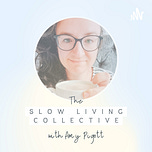

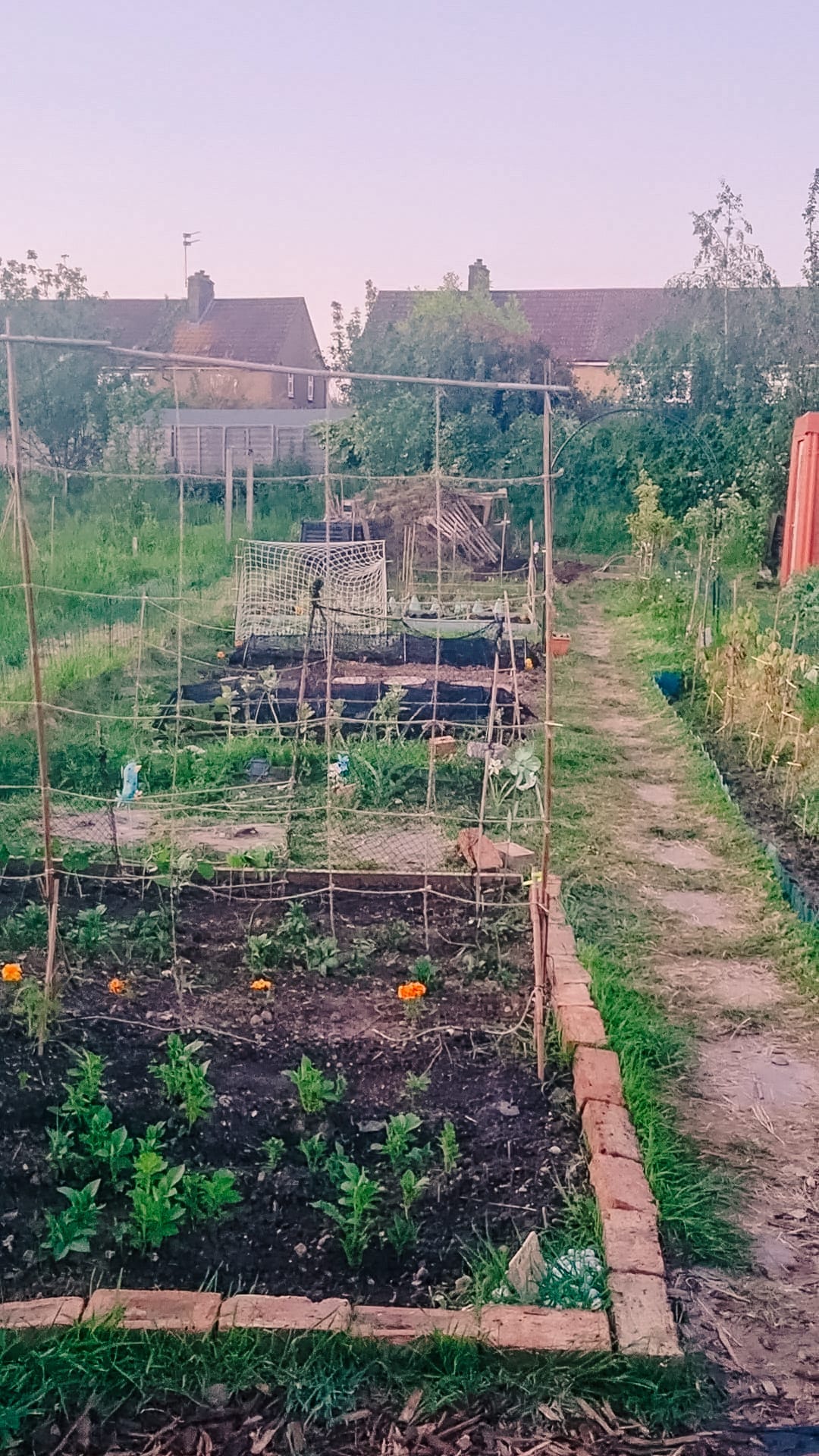
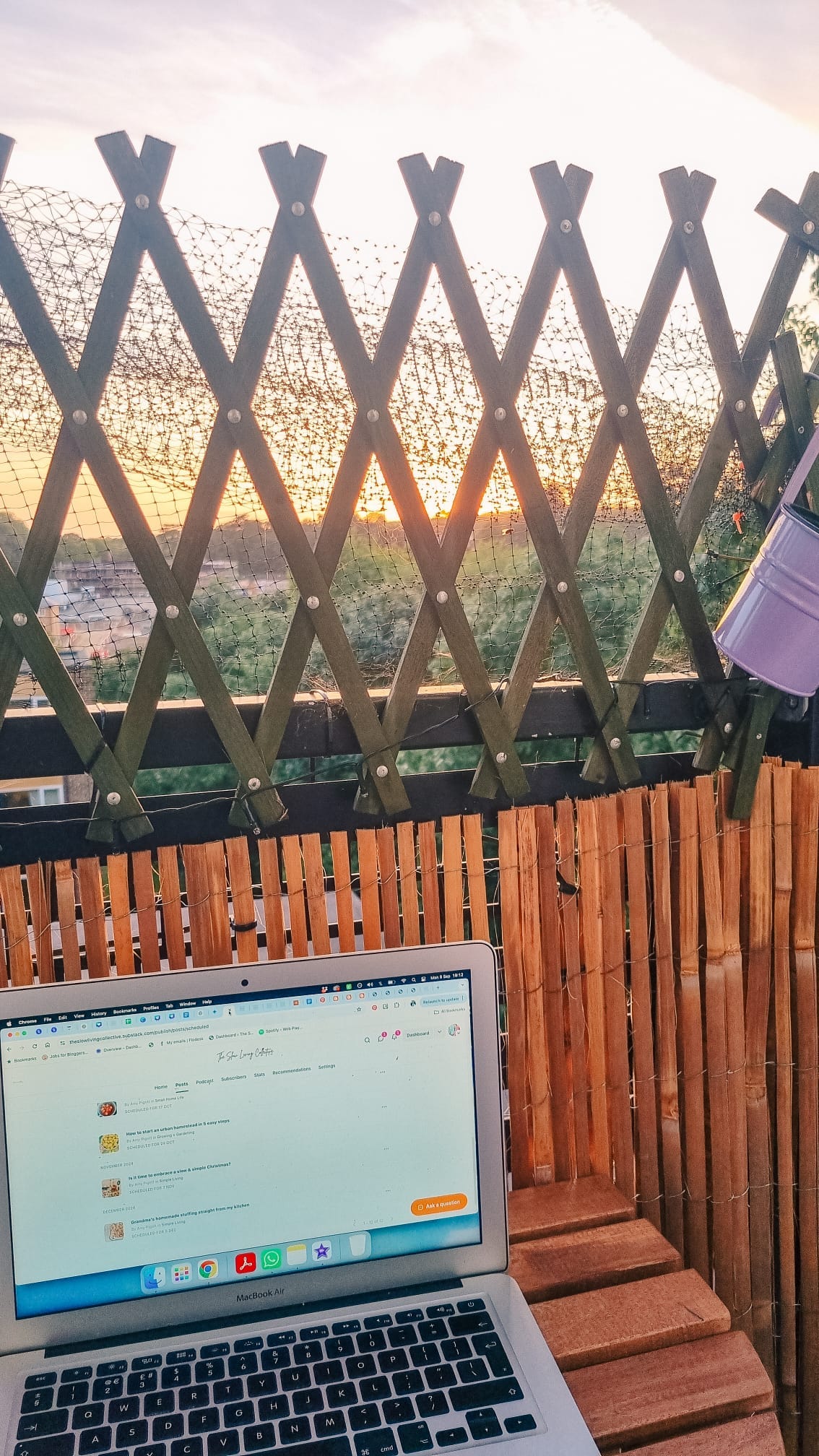


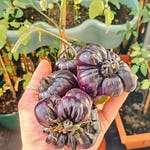






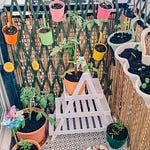
Share this post